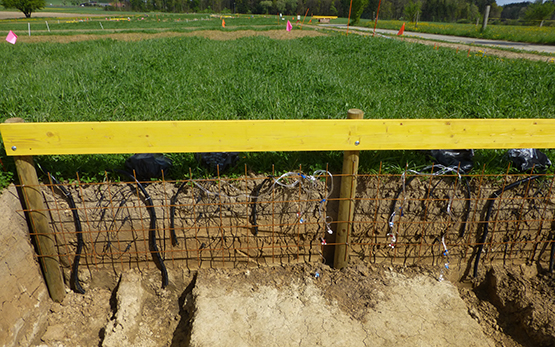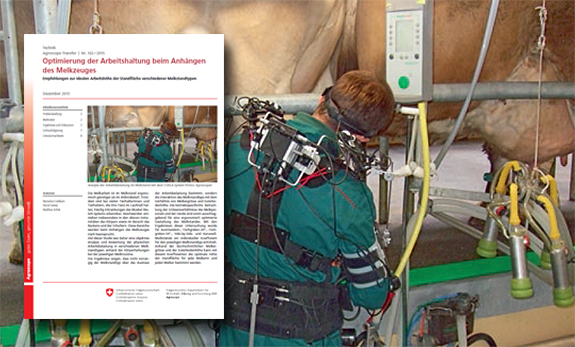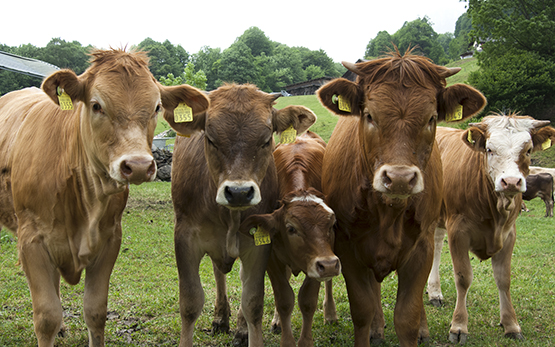Huber R., Cockburn M., Gazzarin C.
Wie wirtschaftlich ist die Pensionspferdehaltung?: Ergebnisse aus einer ETH Masterarbeit von Rafael Huber.
In: Strickhof Pensionspferdetag. 20. März, Wülflingen. 2024, 1-23.
Heikkilä U., Ueda K., Gobbo Oliveira Erünlü N., Baumgartner M., Cockburn M., Bachmann I., Roig-Pons M., Rieder S.
Social network analysis of horses inferred from sensor ear tag and GPS-logger data.
In: EAAP 74 Annual Meeting. 26 Augus, Lyon. 2023, 652.
Heikkila U., Ueda K., Baumgartner M., Cockburn M., Bachmann I., Roig-Pons M., Rieder S.
Social network analysis of horses inferred from sensor ear tag and GPS-logger data.
In: EAAP 74 Annual Meeting. 26 August, Lyon. 2023, 1.
Hiltebrand C., Roig-Pons M., Baumgartner M., Cockburn M., Doetterl S., Bachmann I., Keller T., Briefer S., Würbel H., Gmel A., Pauler C., Schneider M. K., Nasser R.
Laufende Versuche auf Agroscope-Forschungsterrain St.Aubin.
In: Jeudi au Haras. 20. Juli, Avenches. 2023, 1.
weitere Sprachen: französisch
Ellerbrock C. N., Zeitler-Feicht M., Cockburn M., Erhard M.H., Baumgartner M.
Urinating in transponder-controlled feeding stations: Analysis of an undesirable behaviour in horses.
Applied Animal Behaviour Science, 266, 2023, 1-10.
Gasser L., Perez F. C. , Cockburn M.
Can meteorological data improve the short-term prediction of individual milk yield in dairy cows?
Journal of Dairy Science, In Press, 2023.
Ellerbrock C., Zeitler-Feicht M. H., Cockburn M., Erhard M. H., Baumgartner M.
Analyse des unerwünschten Verhaltens “Urinabsatz in Abrufautomaten“ von Pferden.
Agroscope Science, 133, 2023, 36-37.
Reissig L., Cockburn M.
Neuer Rohstoff aus der Landwirtschaft.
Schweizer Bauer, 20. Mai, 2023, 4.
Gómez Y., Cockburn M., Hankele A. K., Gygax L., Zähner M., Hillmann E. , Savary P.
Effects of small milking stalls on stress responses in dairy cows during milking in group milking parlors.
Journal of Dairy Science, 105, (1), 2022, 609-622.
Gandorfer M., Hoffmann C., El Benni N., Cockburn M., Anken T., Floto H.
Informatik in der Land-, Forst- und Ernährungswirtschaft: Fokus: Künstliche Intelligenz in der Agrar- und Ernährungswirtschaft.
In: 42. GIL Jahrestagung. P-317, Hrsg. Gesellschaft für Informatik e.V. (GI), Agroscope, Tänikon, Ettenhausen, Schweiz. 2022.
Cardoso Moreira Waldburger T., Cockburn M., Monney P., Anken T.
Dendrometers reflect physiological growth, leaf flushing cycles and water stress levels of cocoa trees.
In: 41. GIL-Jahrestagung, Informations- und Kommunikationstechnologie in kritischen Zeiten. 8.-9. März, Hrsg. A. Meyer-Aurich, M. Gandorfer, C. Hoffmann, C. Weltzien, S. Bellingrath-Kimura, H. Floto, Potsdam. 2021, 337-342.
Cockburn M.
Can algorithms help us manage dairy cows?
In: 41. GIL-Jahrestagung. 8. - 9. März, Potsdam (D). 2021, 67-72.
Cardoso Moreira Waldburger T., Cockburn M., Monney P., Anken T.
Dendrometers reflect physiological growth, leaf flushing cycles and water stress levels of cocoa trees.
In: 41. GIL-Jahrestagung, Informations- und Kommunikationstechnologie in kritischen Zeiten. 08.03., Bonn. 2021, 337-342.
Cockburn M.
Review: application and prospective discussion of machine learning for the management of dairy farms.
Animals, 10, 2020, 1-22.
Cockburn M., Latsch R.
Biologisch die Blacke plagen.
UFA-Revue, 9, 2020, 42-44.
weitere Sprachen: französisch
Gómez Y., Terranova M., Cockburn M., Gygax L., Zähner M., Savary P., Hillmann E.
Einfluss kleiner Melkplätze auf Verhalten, Physiologie und Milchabgabe in Gruppenmelkständen.
In: 20. Jahrestagung der Wissenschaftlichen Gesellschaft der Milcherzeugerberatung e.V.. 2.10., Hrsg. WGM Wissenschaftliche Gesellschaft der Milcherzeugerberatung e.V., Humboldt-Universität zu Berlin. 2020, 16-20.
Cardoso Moreira Waldburger T., Monney P., Anken T., Cockburn M., Audrey E., Lecoeur J., Brini M., Forster D., Jöhr H.
Growing Cocoa in Semi-Arid Climate - a Scalable Use Case for Digital Agriculture.
Agroscope Science, 86, 2019, 1-65.
weitere Sprachen: andere Sprache
Cockburn M., Gomez Y., Schick M., Maffiuletti N.A., Gygax L., Savary P., Umstätter C.
Effect of milking stall dimensions on upper limb and shoulder muscle activity in milkers: Stall size effect on muscle activity in milkers.
Journal of Dairy Science, 102, (5), 2019, 4563-4576.
Cockburn M., Schick M., Maffiuletti N.A., Gygax L., Savary P., Umstätter C.
Lower working heights decrease contraction intensity of shoulder muscles in a herringbone 30° milking parlor.
Journal of Dairy Science, 100, (6), 2017, 4914-4925.
Cockburn M., Savary P., Schick M.
Optimierung der Arbeitshaltung beim Anhängen des Melkzeuges: Empfehlungen zur idealen Arbeitshöhe der Standfläche verschiedener Melkstandtypen.
Agroscope Transfer, 102, 2015, 1-8.
weitere Sprachen: französisch








